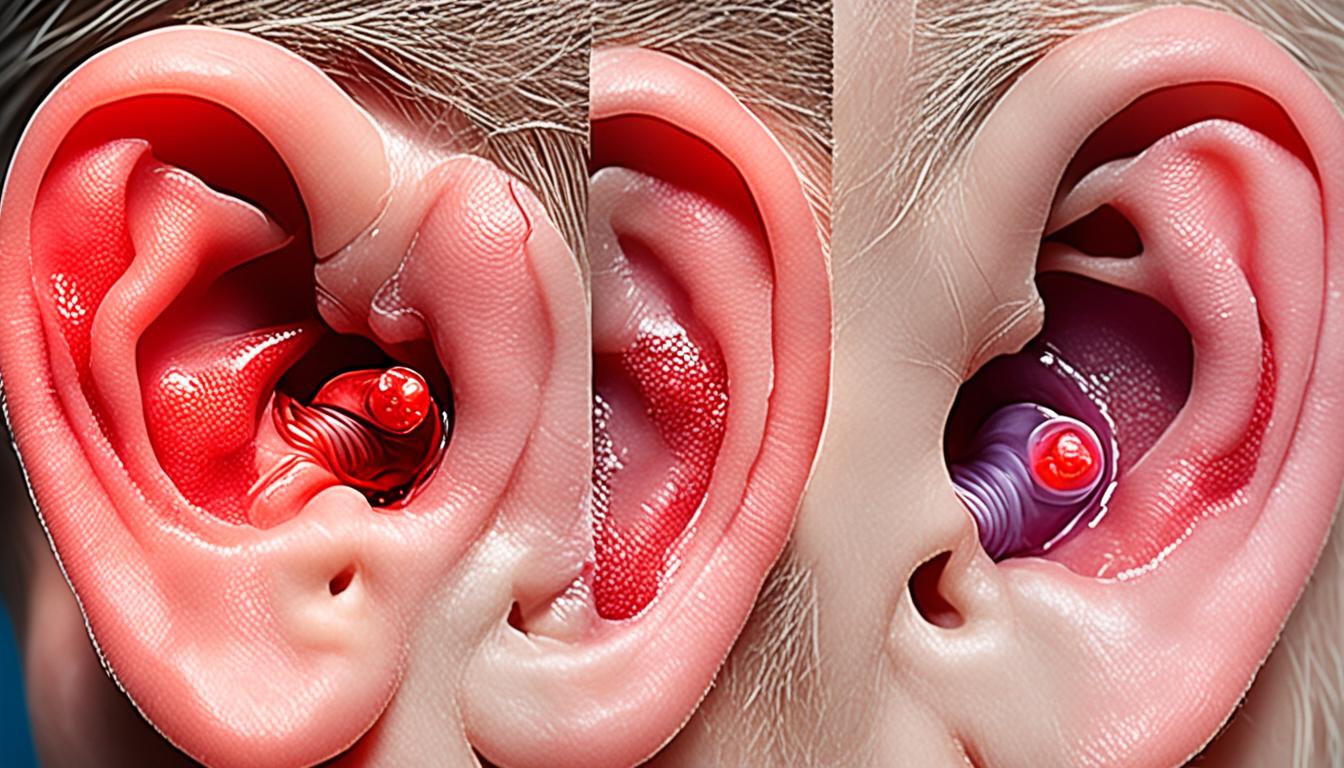Otitis-related disorders cover many inflammatory conditions in the outer, middle, or inner ear. The main type is otitis media in the middle ear. Swimmer’s ear, or otitis externa, is another type that targets the outer ear. It is often due to too much water, or bacterial and fungal infections. Signs of otitis externa include ear pain, itching, redness, and swelling. Acting fast to diagnose and treat it can stop problems and speed up healing. For severe cases, stem cell therapy could be an option.
Key Takeaways:
- Otitis externa, also known as swimmer’s ear, is an ear infection that affects the outer ear.
- Excessive water exposure and bacterial/fungal infections are common causes of otitis externa.
- Symptoms of otitis externa include ear pain, itching, redness, and swelling.
- Diagnosis is typically done through a physical examination of the ear and may involve laboratory analysis of discharge.
- Treatment for otitis externa includes cleaning and drying the ear, using prescribed ear drops, and taking pain relievers if necessary.
- Stem cell therapy may be an option for severe cases of otitis externa.
Causes and Symptoms of Outer Ear Infection
Outer ear infections, called otitis externa or swimmer’s ear, have several causes. The key one is too much water. This makes a perfect spot for bacteria and fungi to grow. Getting water in your ear from swimming is a common way to get this infection. Other causes include things irritating your ear, allergies, and skin conditions.
The signs of outer ear infection are ear pain, itching, redness, swelling, and discharge. Sometimes, you might not hear well, have a fever, or feel bumps near your neck. Knowing these signs is crucial. If you notice them, see a doctor. They can help prevent further issues and make you feel better.
Swimming can lead to water getting in your ears, hence its name. When water removes the outer layer of earwax, infections can happen. This is because the barrier against germs is gone. Using things like earbuds that keep your ears wet can also cause infections.
Putting stuff like cotton swabs, hairpins, or earrings in your ear can hurt your skin. This can start an infection. Allergies and skin problems like eczema can weaken your ear’s defenses. This makes infection more likely.
Diagnosis and Treatment of Outer Ear Infection
Doctors diagnose otitis externa, or swimmer’s ear, by looking closely at the ear. They use a tool called otoscope for this. It lets them see if the ear is red, swollen, or has any other signs of infection. Sometimes, they take a sample of the fluid inside the ear. They check this sample in a lab to know what’s causing the infection.
For otitis externa, doctors often start by cleaning the ear. They want to remove dirt and make sure it’s not wet. This step helps stop bacteria or fungus from growing. Next, the doctor may give special ear drops. These drops have medicine that fights the infection and eases swelling. Also, the doctor might suggest taking pain relievers to feel better.
If the ear infection is very bad or keeps coming back, more steps might be needed. The doctor may ask you to take medicine by mouth. These pills are to fight the infection from inside. It’s very important to finish all the medicine the doctor prescribes. Also, remember to keep your ear dry and avoid swimming when told. This is key to getting well and stopping the infection from returning.

